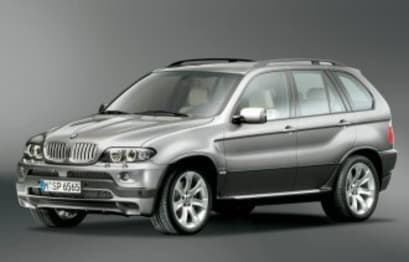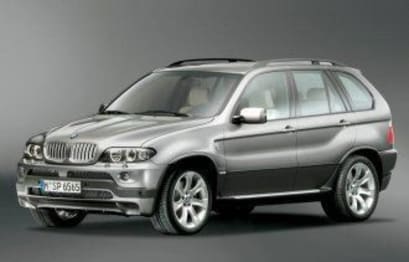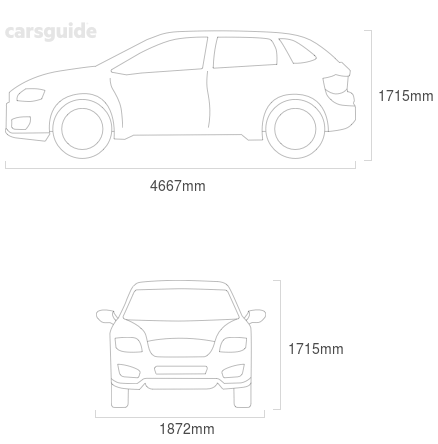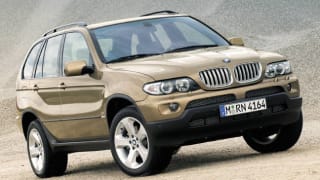
What's on this page
BMW X5 2006
This is what Ewan Kennedy liked most about this particular version of the BMW X5: Very good on-road handling, Adequate off-road ability, Gen-3 very efficient
The 2006 BMW X5 carries a braked towing capacity of up to 2700 Kg, but check to ensure this applies to the configuration you're considering.
BMW X Models 2006 Price and Specs
Pricing guides

| BMW X Models | Body Type | Specs | Price from | Price to | |
|---|---|---|---|---|---|
| X3 2.5I | SUV | 2.5L PULP 5 SP | $6,380 | $8,910 | |
| X3 2.5I | SUV | 2.5L PULP 6 SP MAN | $6,050 | $8,580 | |
| X3 2.5SI | SUV | 2.5L PULP 6 SP AUTO | $7,040 | $9,900 | |
| X3 2.5SI | SUV | 2.5L PULP 6 SP MAN | $6,160 | $8,690 | |
BMW X5 2006 Q&As
Check out real-world situations relating to the BMW X5 here, particularly what our experts have to say about them.
-
Is a 2015 BMW X5 suitable for country highway driving and some tough terrain?
The biggest determining factor in how a car copes with tougher terrain is driver behaviour. Drive the car sensibly, sympathetically and to the conditions and you'll be amazed where most cars will happily take you. But get it wrong and drive in a ham-fisted way, and even the roughest, toughest four-wheel-drive will suffer and fail.
The BMW X5 is a soft-roader at best, but should definitely have the suspension to tackle rough roads (as opposed to off-road). The biggest challenge will be the tyres fitted. Many of these vehicles had huge wheels with tyres with very little sidewall. These tyres are easily damaged on rough roads.
Since luggage space is not a critical issue for you, I'd suggest buying a full-sized spare tyre that fits the car, as the SUV's usual space-saver or tyre repair kit can be fairly useless in such conditions. But you also need to be honest about your intentions. By mud and water, do you mean the odd puddle, or 10km of rutted farm track with bog-holes for good measure? If there's any off-road work at all, then you need an off-road four-wheel-drive, not an SUV.
Show more -
BMW X5 diesel problems
Despite the price and BMW’s reputation, this series of X5 was not without its problems. Specific to the diesel-engined versions was a raft of things to watch out for when shopping for a second-hand X5. Those start with a poorly designed intake system which used small flaps in each inlet trat designed to create better air and fuel mixing and, therefore, more complete burning of the fuel. The problem was that these little flaps were secured by two screws each, and these could become loose and fall into the engine with catastrophic results. In some cases, the screws could even migrate into the turbocharger unit, destroying it.
Like many other brands of modern turbo-diesel, the X5 could also be afflicted by problems caused by a blocked Diesel Particulate Filter (DPF). If the vehicle was used for urban work rather than highway running, the DPF could become clogged and unable to regenerate itself. Any X5 diesel with a `Service Engine Soon’ light illuminated on the dashboard is a potential problem child.
The car’s exhaust gas recirculation valve could also leak, causing faults within the emissions-control system, while the electronics associated with the fuel injectors could also be damaged by water entering the engine compartment.
Beyond the diesel engine, the rest of the X5 package was not without problems, either. Those can include electronic issues, poor water sealing around the body, noisy suspension and problems with petrol-engined variants as well. Fundamentally, this was not BMW’s finest hour quality-wise. It’s also worth noting that even though the BMW brand is a German one, this generation of X5s was manufactured in South Carolina in the USA.
Show more -
Would swapping 20-inch wheels for 18-inch wheels affect the handling and safety of my BMW X5?
Urban dwellers love the look of huge wheels and low-profile tyres, but their country cousins generally hate them. That’s because those some giant wheel and tyre packages make the car ride more harshly and the tyres themselves are more prone to damage because there’s less sidewall to soak up impacts.
Switching to an 18-inch wheel and a tyre with more sidewall would definitely make the car ride better, but it’s not always that simple. For a start, you might run into problems in a legal and insurance sense because you’ve suddenly modified the car. To get around that, you should stick to the smallest wheel and tyre package that the manufacturer specified for that vehicle. In the case of a current model BMW X5 that’s a 19-inch wheel and tyre. That’s going to give a better ride than the 20-inch items you currently have, but it won’t be as big an improvement as an 18-inch package. If, however, yours is not the current model X5, then previous models did, in fact, offer an 18-inch package.
Either way, check with your insurance company that you’re not transgressing at some pedantic level and check, too, that the smaller wheels won’t drastically alter the overall gearing and suddenly make your speedometer inaccurate.
As for handling and braking, the differences between an 18-inch and 20-inch wheel tyre package would only be felt on a race-track and not in everyday driving conditions. But the improvement to ride quality will be felt every time you drive the vehicle.
Show more -
BMW X5: Replacement key cost
An automotive locksmith might be able to help you on the cheap, but if they can't you'll need to go to your dealer. You can read more about how to replace your key fob here.
Show more
BMW X5 2006 Wheel size
Wheel size for the 2006 BMW X5 will vary depending on model chosen, although keep in mind that many manufacturers offer alternate wheel sizes as options on many models.The wheel size available will alter the range of tyres available to be fitted. Standard wheel sizes on the BMW X5 vary from 17x7.5 inches to 20x9.5 inches.
| BMW X5 Model | Body Type | Front Tyre Size | Front Rim | Rear Tyre Size | Rear Rim | |
|---|---|---|---|---|---|---|
| X5 3.0I | SUV | 235x65 R17 | 17x7.5 inches | 235x65 R17 | 17x7.5 inches | |
| X5 3.0D | SUV | 235x65 R17 | 17x7.5 inches | 235x65 R17 | 17x7.5 inches | |
| X5 4.4I | SUV | 255x55 R18 | 18x8.5 inches | 255x55 R18 | 18x8.5 inches | |
| X5 4.8IS | SUV | 275x40 R20 | 20x9.5 inches | 315x35 R20 | 20x10.5 inches | |
BMW X5 2006 Dimensions
Dimensions for the 2006 BMW X5 are dependent on which body type is chosen. The maximum width and height is 1925mm x 1715mm and can vary on the basis of model.


| BMW X5 Model | Body Type | Height x Width x Length | Ground Clearance | |
|---|---|---|---|---|
| X5 3.0I | SUV | 1715x1872x4667 mm | 187 mm | |
| X5 3.0D | SUV | 1715x1872x4667 mm | 187 mm | |
| X5 4.4I | SUV | 1707x1872x4667 mm | 187 mm | |
| X5 4.8IS | SUV | 1707x1925x4667 mm | 187 mm | |
BMW X5 2006 Towing capacity
The BMW X5 has maximum towing capacity of 2700kg. Some models also offer heavy-duty or towing option packs which can increase towing capacity, as well as options which can hamper towing capacity. Towing capacities can vary wildly on a large number of factors. These include engine, transmission, model, and options chosen. Always check with the manufacturer or in your vehicles handbook before attempting to tow anything.
| BMW X5 Model | Body Type | Specs | Braked Capacity | |
|---|---|---|---|---|
| X5 3.0I | SUV | 3.0L,PULP,6 SP MAN | 2700kg | |
| X5 3.0I | SUV | 3.0L,PULP,5 SP | 2700kg | |
| X5 3.0D | SUV | 3.0L,Diesel,6 SP MAN | 2700kg | |
| X5 3.0I | SUV | 3.0L,PULP,5 SP AUTO | 2700kg | |
BMW X5 2006 Fuel consumption
Fuel consumption for the 2006 BMW X5 is dependent on the type of engine, transmission, or model chosen. The BMW X5 currently offers fuel consumption from 7.9 to 14.6L/100km. The BMW X5 is available with the following fuel types: Diesel and PULP.
| BMW X5 Model | Body Type | Specs | Fuel Consumption | |
|---|---|---|---|---|
| X5 3.0D | SUV | 3.0L,Diesel,6 SP MAN | 7.9L/100km | |
| X5 3.0D | SUV | 3.0L,Diesel,6 SP AUTO | 8.6L/100km | |
| X5 3.0I | SUV | 3.0L,PULP,5 SP AUTO | 11.1L/100km | |
| X5 3.0I | SUV | 3.0L,PULP,6 SP MAN | 11.4L/100km | |







